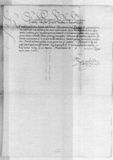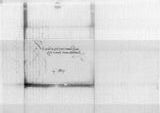Letter #5496
Sigismund I Jagiellon to Ioannes DANTISCUSVilnius, 1536-04-22
| received [1536]-05-02 Manuscript sources:
Prints:
| ||||||
Text & apparatus & commentary Plain text Text & commentary Text & apparatus
Reverendo in Christo Patri, domino
Reverende in Christo Pater, sincere nobis dilecte.
Ad comites istos Phrusios, de quibus nobis Sinceritas Tua perscripsit
, non possumus hinc nunc equos eiusmodi, qui ex illorum sententia futuri essent, mittere, propterea quod hic id genus equos non habemus et locorum intercapedine tanta tamquam longinquo itinere commode adduci perducique non possent. Sed cum aspirante Deo sospites in
Ex mandato sacrae regiae maiestatis proprio


 BNW, BOZ, 953, f. 144v
BNW, BOZ, 953, f. 144v